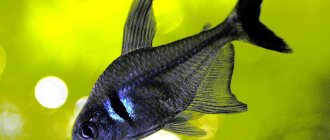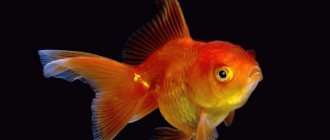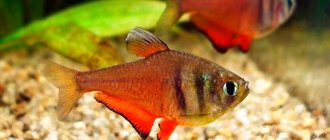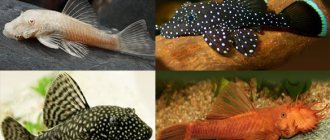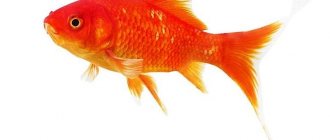Habitat in nature
The fish is named after Herbert Richard Axelrod, a tropical fish expert, pet book publisher, and entrepreneur. And Hyphessobrycon: from the Ancient Greek οπελάσσων, meaning "smaller in stature", used as a prefix, plus the generic name Brycon.
Black neon (Hyphessobrycon herbertaxelrodi) was first described by Géry in 1961. They are native to South America, widespread in the upper Rio Paraguay in the states of Mato Grosso and Mato Grosso do Sul, Brazil, both north and south of the vast tropical wetlands known as the Pantanal. Currently not caught from natural habitats, the fish is easily bred in captivity.
In their native environment, these fish live in small tributaries, streams, flooded forests and on the sandbanks of large rivers. The water in such places is very acidic and is usually brown in color, from plants and leaves rotting at the bottom.
Feeding Neons
Neon black is an omnivorous fish. You can feed him any type of live, fresh and ready-made flake food. Neons eat small bloodworms, mosquito larvae, and frozen Cyclops with great pleasure, but they also get used to being fed dry food. For good growth and excellent health of the fish, it is recommended to feed them regularly: high-quality food in small portions several times a day. In extreme cases, neons can withstand a long hunger strike of 3-3.5 weeks. In nature, these fish grab insects from the surface of the water, so in an aquarium they do not pick up food from the bottom. They should be fed in such portions that all the food is eaten in 3 minutes. It is very good to sometimes give live or frozen brine shrimp as a tasty treat.
Neon black
Description
Black Neon is a small and graceful tetra. Typically, the maximum body length is 4 cm, and the life expectancy is about 3-5 years. The fish has a simple basic coloration, but with two distinct adjacent longitudinal stripes, white over black. The eye has two thin but distinctive stripes of color on top, red over yellow.
It got its name for its similarity with ordinary neon, but it is easy to distinguish them. The black one has a silver-white stripe, while the normal one has a blue stripe, in addition, the black one has it above a wide black stripe, and the normal one has it above the red one, reaching half the body.
Appearance
Neon black is a small fish with an elongated body. The tail is divided into two fins of almost transparent color. The fin located on the back has a reddish tint. There is also an adipose fin on its body. The photo clearly shows that the back is painted in a greenish tint. Along her small body, on both sides, there are two lines - green and dark green, close in shade to black. It is noteworthy that in black neon the upper part of the eye has many capillaries, so it appears red. It is not difficult to distinguish a male from a female. Firstly, the male is slimmer than his girlfriend, and secondly, during excitement, for example, a fight, the stripe from the body passes to the caudal fin. Most often, the length of all individuals does not exceed 4-4.5 centimeters. Life expectancy is about five years.
Content complexity
Black neon is a fairly unpretentious fish and is well suited for beginners. They adapt well to different conditions in the aquarium and readily eat a variety of foods. They get along with any peaceful species without problems.
They tolerate different conditions well, are unpretentious in food, and can breed both in a flock and in pairs.
They love aquariums densely overgrown with plants, with dim light, in which they form flocks. It is better to keep them from 7 individuals or more, because in nature this is the easiest way for small and peaceful fish to survive.
Diseases and prevention
Black neons can get sick for a variety of reasons. To ensure that the disease does not lead to dire consequences, you need to know the symptoms of major diseases and respond in a timely manner.
| Disease | Manifestation | Treatment |
| Pleistophorosis or neon disease affects young individuals. Caused by mycosporidium fungi. | Muscle necrosis is cloudy areas on the fish's body. Symptoms may not appear. | Sick people are eliminated and the rest are monitored. You can try some medications:
|
| False neon disease is caused by bacteria acquired through live food. | The fish lose activity, uncoordinated movements occur, the fins are lowered, the back is arched. The color fades, individuals do not accept food, and after a few days scales begin to fall out. | Antibiotics are used against all microorganisms. If the disease is detected early, it can be stopped and the fish can be cured. The water in the aquarium is cooled to +19 °C. |
| Vibriosis is a pathology of bacterial nature. | General symptoms: lethargy, apathy, refusal to eat. In severe cases, ulcers form throughout the fish's body. | Sick fish are removed and fed for a week with antibiotics and sulfonamide drugs: Oxolinic acid, Levomecetin, Oxytetracycline, Furazolidone. |
| Neon dropsy - ascites. | In addition to general manifestations, fish have a bloated abdomen, bulging eyes, and ruffled scales. They breathe frequently with their mouths wide open and do not sink to the bottom. | At the first symptoms, antibiotics are given: Levomecetin, Furan. |
Keeping in an aquarium
This is a schooling fish, and quite active, it is better to keep them at least 7 pieces. For this amount you need an aquarium of 70 liters or more; if the flock is larger, then the volume increases.
They love soft and acidic water, a large number of plants and dark soil. They look best in a natural biotope, with sand on the bottom, driftwood and plant leaves.
To highlight their color, use a muted color.
It is advisable to maintain the following water parameters: temperature 24-28C, pH: 5.0-7.5, 6 - 15 dGH. But now they are bred for sale in huge quantities and such fish are already well adapted to local conditions.
Since the fish is quite active, the aquarium needs to have a place for swimming and it must be covered - black neons are excellent jumpers.
Water filtration and moderate flow are desirable, as well as weekly water changes of up to 25% of the volume.
Breeding
To reproduce Black Neons, you need to purchase representatives of both sexes: the female differs from the male in its larger size and rounded belly, as a result of which the stripe on the body looks curved. The female is capable of reproduction at 6 months of age.
For spawning, the required volume of water in the aquarium is about 30 liters; the spawning compartment in it should be separated with a net at a depth of 20-25 cm; it is permissible to plant it with sterile plants. The water must be settled, with a temperature of no more than +23 °C, with a slightly acidic reaction pH of no more than 6.7. The spawning tank must be darkened, otherwise all the eggs will die.
Sexually mature females are separated and kept for a month at a temperature not exceeding +23 °C on live food. Then unfed males are introduced. After 2 days, the fish goes to spawn for up to 2 hours, laying up to 450 eggs.
The fish eat their own eggs, so after they are laid, the adults are isolated.
On the 2nd day, larvae appear and hover motionlessly in the water. At this time, they do not look like their parents: gray with a black stripe. As soon as the fry become active, they are gradually fed with ground dry food, and the lighting is also gradually increased. After about a month, the larvae acquire the features of adult fish, by which time they are moved in with their relatives.
Compatibility
Due to their peacefulness and beauty, the fish is very popular in community aquariums, in fact, it is one of the best characins to keep, even for beginners.
Black Neons are ideal for community aquariums with other peaceful fish. This is one of the best tetras as it is very active, beautiful and completely peaceful.
But it is important to keep a flock of no more than 7 fish, it is in it that its beauty will fully reveal itself and be noticeable. Try to buy mixed-sex fish of at least 8-10 individuals, include other schooling fish to ensure safety, and you will be rewarded with more natural-looking black neons.
The best neighbors for these are guppies, zebrafish, rasboras, laliuses, marbled gouramis, and acanthophthalmus.
How to choose black neon?
Diamond neon is sold in specialized zoological stores. But it is difficult to select a suitable phenotype, since it cannot be felt.
Before purchasing, the aquarium fish is inspected. A healthy individual has no scratches, swelling, damage or wounds on its body. The presence of a swollen belly and damaged fins indicates that the condition of the fish is poor. Such an individual is not purchased.
For a standard container, flocks of 8–12 individuals are used. For their normal development, certain vegetation, decorative elements, driftwood and high-quality substrate are required.
Experienced aquarists stock tanks with black neons. After all, they liven things up. To extend their life span, it is necessary to create appropriate conditions. If you follow simple rules, then even novice aquarists can cope with this task.
Video about black neons
AdminAuthor of the article
Did you like the article?
Share with your friends:
Health and life expectancy
With good care, neons live for about 4 years. Poor nutrition, lack of hygiene and constant stress make fish vulnerable to such dangerous diseases as:
- Plistophorosis. The disease develops under the influence of a fungus introduced into an aquarium with infected fish or contaminated water. It is manifested by fading of color and apathy. Sick fish lose their former energy and swim upside down. Plistophorosis cannot be treated, so infected neons are destroyed, and the tank itself is treated with disinfectants.
- Ichthyophthyriosis. Various specks and bumps appear on the body of a sick individual, reminiscent of semolina. Ichthyophthiriasis is treated by increasing the water temperature by a couple of degrees and saturating it with oxygen. If these measures prove to be ineffective, purchased funds are used.
Neons are peaceful, graceful fish with iridescent scales that glow in the dark. They do not require specific care, but are very sensitive to water temperature.
Reproduction
Breeding aquarium neon fish is relatively easy. She doesn't need special conditions. We discuss the topic of neon breeding in more detail in a separate article.
Neon blues are considered sexually mature at 6–9 months. The best producers are considered to be individuals 10–12 months old.
Preparation for spawning: males and females are placed in different aquariums, where they are kept in cool water (about 19 degrees) for a month and fed well and varied with live food.
Popular types
The neon fish amazes with its great diversity. Each type has its own color.
Red
This representative has the brightest color. A bright red stripe stretches along the entire body. It is located under the glowing blue line. The body of red neon is slightly elongated and flattened on the sides. Large scales are clearly visible on the luminous strip. The eyes are bluish-green in color. The fins of the fish are transparent. But on the anal and dorsal a bluish edging is visible.
Like other species, red neon is friendly and not aggressive. It reaches 3-4.5 cm in length. They can live in all layers of water. They feel good in a community aquarium. With good care they will live 4-5 years.
Ordinary
It is also called blue neon. The most common representative. It can most often be found in home aquariums. It was he who was first brought to Europe. His appearance can be confused with red neon. This species has a red stripe, which is also located under the luminous blue line, extending from the middle of the body to the tail.
The body length can be from 3 to 4 cm. To maintain them, you need to purchase aquariums of 30 liters or more. They live in flocks (like all other neons) and love biologically established aquariums. Sudden changes in water parameters can lead to their death.
Diamond (diamond)
Its color resembles blue neon. There is no luminous strip. The body is elongated and slightly flattened laterally. At the level of the dorsal fin there is a bright reddish stripe. It is matte and does not shimmer. The rest of the body is silver. The head has a blue tint. Can reach 4 cm. There is no sexual dimorphism. Aquariums from 30-35 liters are suitable for their maintenance.
Veiled
A very beautiful and graceful fish. Doesn't exist in nature. It was bred through selection. The fins are well developed and resemble a thin veil, which is why the neon got its name. During maintenance, the aquarium must be decorated so that there are no snags or sharp edges of the decorations, otherwise the veil neon will cling to them with its fins. Cohabitants should not be aggressive, otherwise the first thing they will do is bite off all her beauty.
Ideally, such fish should be kept in a species aquarium.
Black
Beautiful and calm aquarium fish. They first appeared here in the mid-60s. They grow up to 4-4.2 cm. The female individual is much larger than the male. The body shape is no different from other representatives. The body color is black-green with a white belly. Two shining stripes stretch along it - black and silver. They live in groups of 10-15 individuals. This is the only way they feel safe. They live in the middle layer of water. Get along well with other fish.
Unpretentious in content. You need to care for them, just like other types of neons. They do not like bright light and prefer more shaded places. Therefore, to decorate an aquarium you need to choose dark soil and dense vegetation.
Blue
The appearance is similar to red and blue neon. Body length is 3-3.5 cm. The female is 1 cm larger than the male. A luminous blue line stretches along the entire body. A dull and almost invisible red stripe runs under it. Schooling and friendly fish. They actively move in all layers of the aquarium. Content will not require effort.
Reviews
Aquarists speak positively about the black neon fish; they are pleased with the ease of keeping and the appearance of their pets. But difficulties arise during reproduction, because if all conditions are not met, then there will be no offspring.
History of appearance
The first to discover these amazing fish was the French explorer Auguste Rabot. He traveled to South America in search of gold and ended up contracting a fever. The adventurer was saved by local residents who found him and were leaving. It was in the house of one of his saviors that he saw an amazing-looking fish in a container of water - it was neon. According to another version, he simply saw them in local waters, but the story of the heroic rescue looks more exciting.
Quickly realizing that such beauty would be in demand in Europe, he decided to start exporting these fish. In 1935, the first individuals were sent to Europe and the USA. His calculations were correct - aquarists liked the neons and now Auguste Rabot became almost the only supplier of these fish. His monopoly was strengthened due to the fact that they could not be propagated in captivity for a long time.
William Innes, a fairly well-known aquarist in those years, played his role in the popularization of these fish. He gave them to his friend George Myers, who is the author of the first scientific description of this species - the blue neon (Paracheirodon Innesi - Myers named the individual in honor of his friend William Innes).


